How Glasgow earned its reputation as the 'Tinderbox City'
- Published
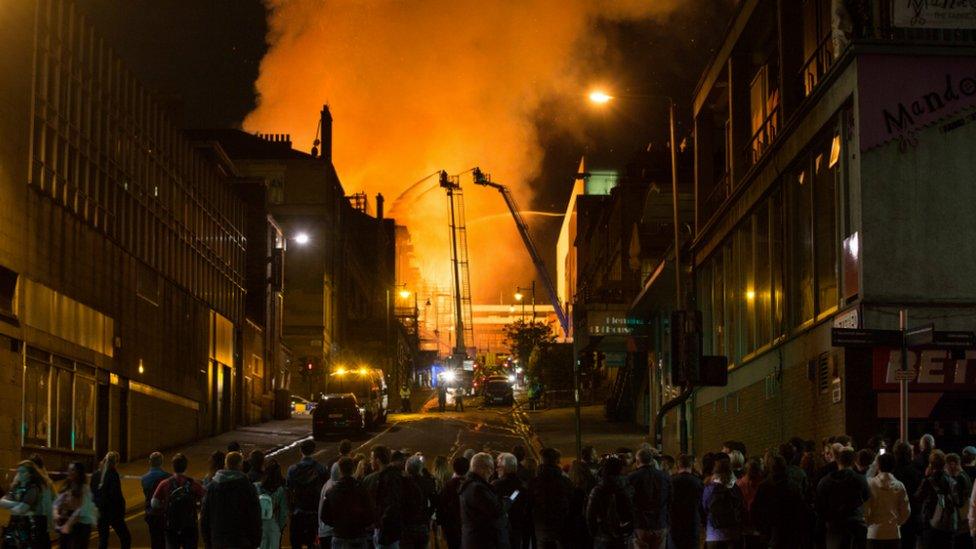
Large crowds gathered and looked on as firefighters tackled the blaze
The devastating Art School fire is the latest to occur in a small part of Glasgow which has witnessed some of Scotland's most dramatic blazes.
Two factory tragedies in the 1960s led to it being dubbed the "Tinderbox City".
This century the roll call of major incidents include fires which destroyed three nightclubs.
Remarkably, they all occurred within a mile of the blaze in the art school's Mackintosh building.
That caught fire at about 23:20 on Friday - for the second time in four years.
The flames quickly spread to nearby buildings, including the Campus nightclub and O2 ABC music venue, which suffered "extensive damage".
Cheapside Street in 1960 - 19 firemen killed
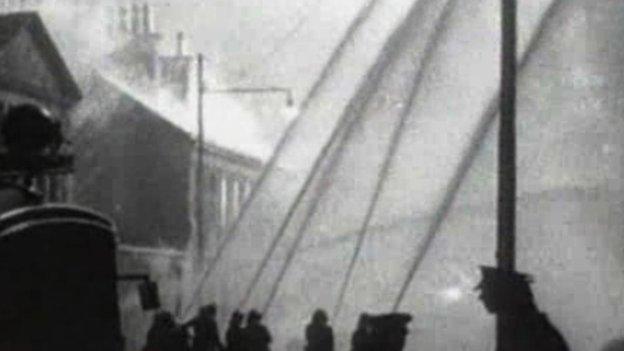
Part of the whisky bond collapsed following an explosion, killing 19 firefighters
Half a century ago, a blaze at a whisky bond on Cheapside Street in Glasgow resulted in the deaths of more than a dozen firemen - making it Britain's worst peacetime fire services disaster.
It broke out the evening of 28 March, 1960 and was fuelled by almost 4.5 million litres of whisky and more than 140,000 litres of rum.
Fourteen firemen and five members of the Salvage Corps were killed instantly as it raged out of control.
The men died after an explosion caused the bond's 20m high (60ft) walls to crash onto the street below.
The flames spread to consume a tobacco warehouse, an ice cream factory and the Harland and Wolff engine factory.
Crews fought the resulting fire for 11 hours until it was finally brought under control the following morning.
In 2010 James Dunlop, one of the firefighters who survived, paid his respects at a memorial to mark the 50th anniversary.
He was awarded the George Medal for bravery for rescuing a colleague who had been blown off a turntable platform above the fire.
He said: "It was a very sudden and unexpected explosion that took us by surprise.
"It took us a few moments to realise that it had occurred.
"To me it wasn't scary after that.
"There was a determination to beat this fire.
"Now I'm older I feel it even more deeply, the sad loss of colleagues and people I was fond of - our team."
James Watt Street in 1968 - 22 lost their lives
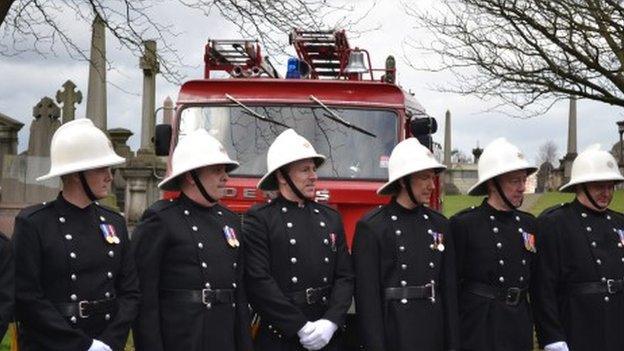
Firefighters at a memorial to mark the 50th anniversary of the Cheapside fire
Later this year, the 50th anniversary of the worst fire in Glasgow's history will be remembered.
On 18 November, 1968, a blaze devastated a factory on James Watt Street.
The building, which housed an upholstery business and a glass company, was a former whisky bond and had bars on its windows which prevented many workers from escaping.
As a result 22 people lost their lives and only three people who were in the factory escaped alive.
Both fires earned Glasgow a reputation as the "Tinderbox City", a term coined by newspapers.
Sadly, it still applies more than half a century on.
More devastation in 2004, 2014 and 2018
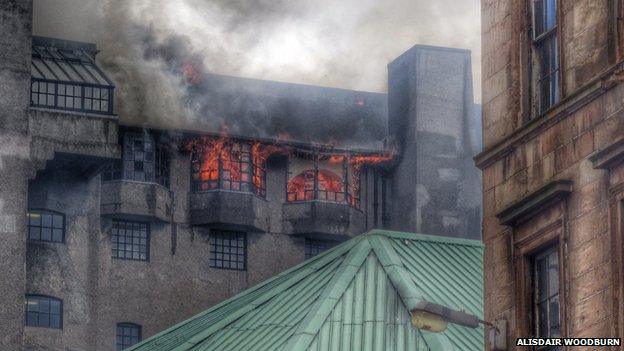
The previous Art School fire in 2014 was caused by flammable gases from a canister of expanding foam
In 2004 two popular Glasgow nightclubs Trash and The Shack were destroyed in a fire, less than 200 yards from the Art School.
The popular student haunts were housed in the A-listed former Elgin Place Congregational Church building.
The fire broke out on 26 November, the morning after The Shack celebrated its fourth birthday.
It left behind a charred shell which had to be demolished.
Mother nature has also left its mark on the area.
In 1998 the steeple of Renfield St Stephen's Church in Bath Street collapsed and smashed into the roof below after the city was battered by 93mph winds.
Glasgow School of Art in 2014 - first major fire
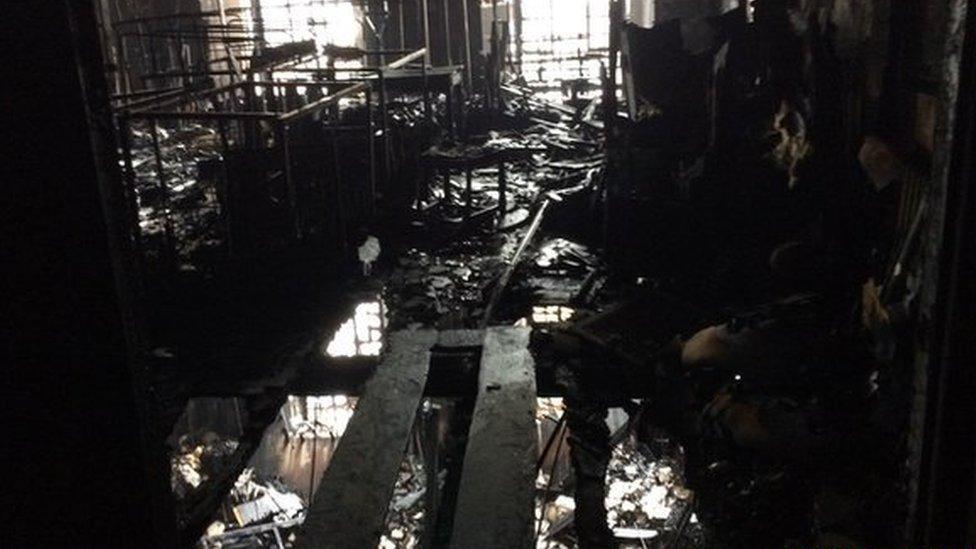
The library was completely destroyed in the blaze
In a cruel coincidence Friday's fire is the second to hit the Art School in four years.
At about 12:30 on Friday 23 May, 2014 fire crews were scrambled to the A-listed Mackintosh building.
Eyewitnesses said the fire appeared to have started when a projector exploded in the basement.
Final year students had been preparing for their end-of-year degree show in the building when the blaze broke out.
The main fire was extinguished by about 17:00 but there were still pockets of flames within the building.
The iconic library, recognised as being one of the finest examples of art nouveau in the world, was lost in the fire.
An investigation later concluded the fire was caused by flammable gases from a canister of expanding foam.
Sauchiehall Street in 2018 - Victoria's Nightclub goes up in flames
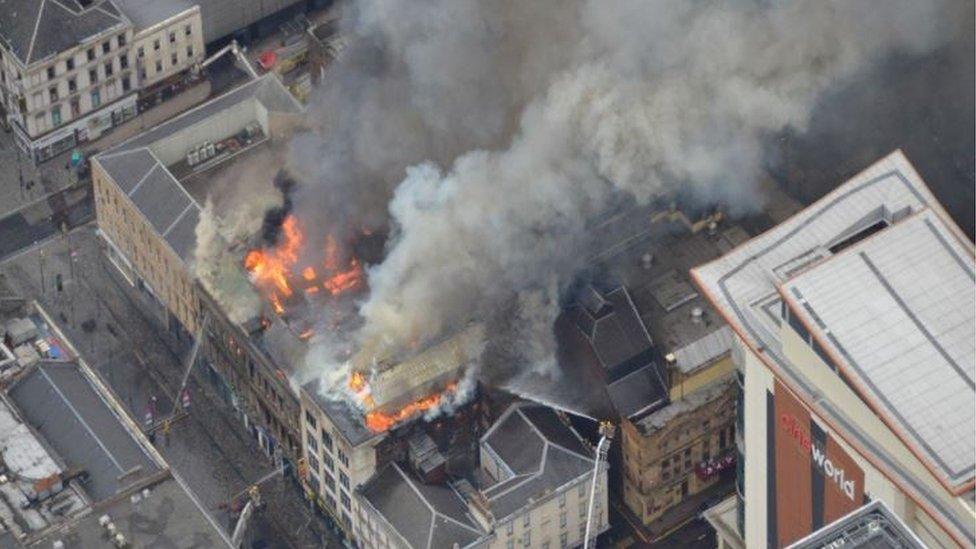
An aerial view from the Police Scotland helicopter shows how close the fire was to the Pavilion
Just three months ago a major blaze swept through a block on Sauchiehall Street, less than half a mile from the Art School.
It housed businesses including Victoria's nightclub.
The flames took hold in the roof of the building at about 08:20 on Thursday 22 March.
One of the first priorities was stopping the fire spreading to the 114-year-old Pavilion Theatre.
At the height of the blaze, more than 120 firefighters and 20 fire engines were mobilised to the city centre.
Glasgow City Council later confirmed the buildings at 92-96 and 98-106 Sauchiehall Street will have to be demolished.
Glasgow has proved its resilience in overcoming many disasters over the years.
But the latest Art School blaze, which looks to have have destroyed all the painstaking restoration work since 2014, presents a daunting new challenge.
- Published16 June 2018
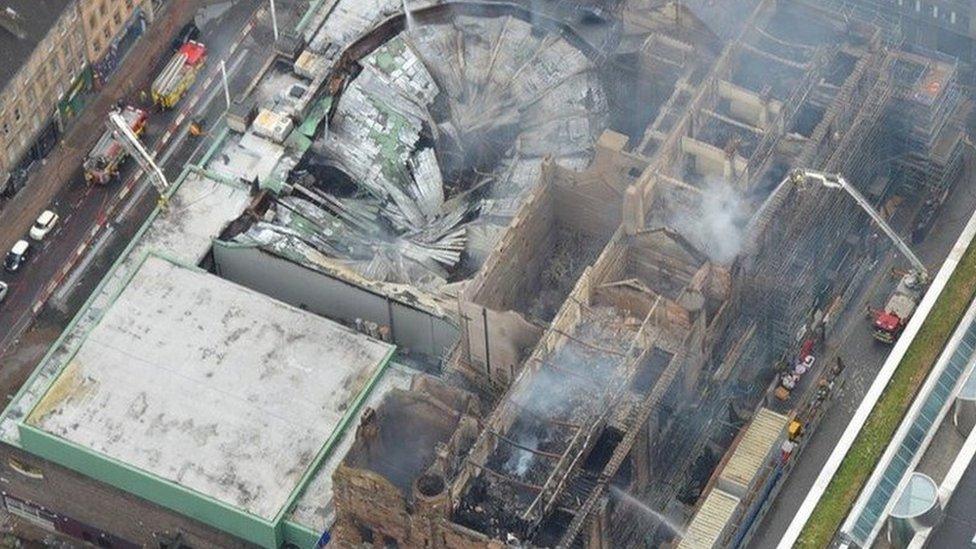
- Published26 March 2018
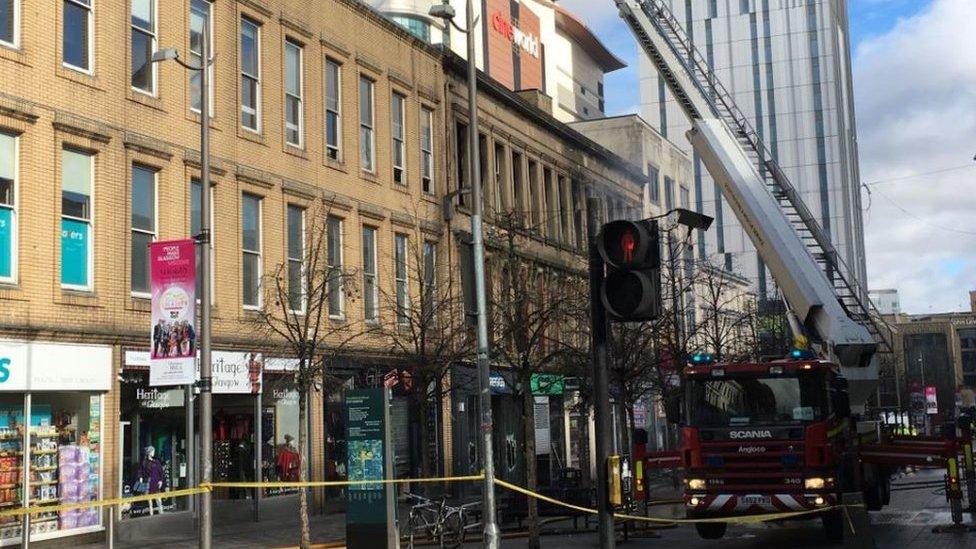
- Published5 April 2018

- Published22 March 2018
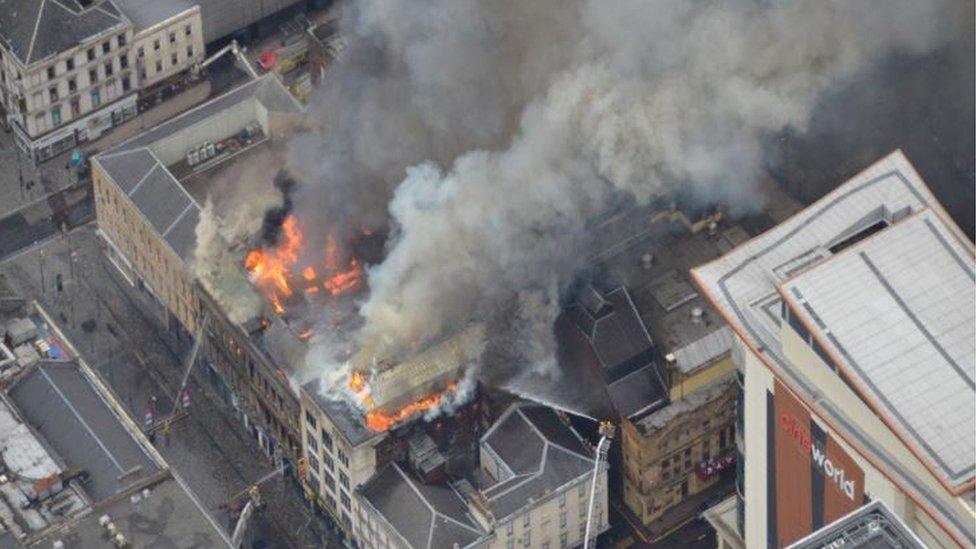
- Published8 September 2017
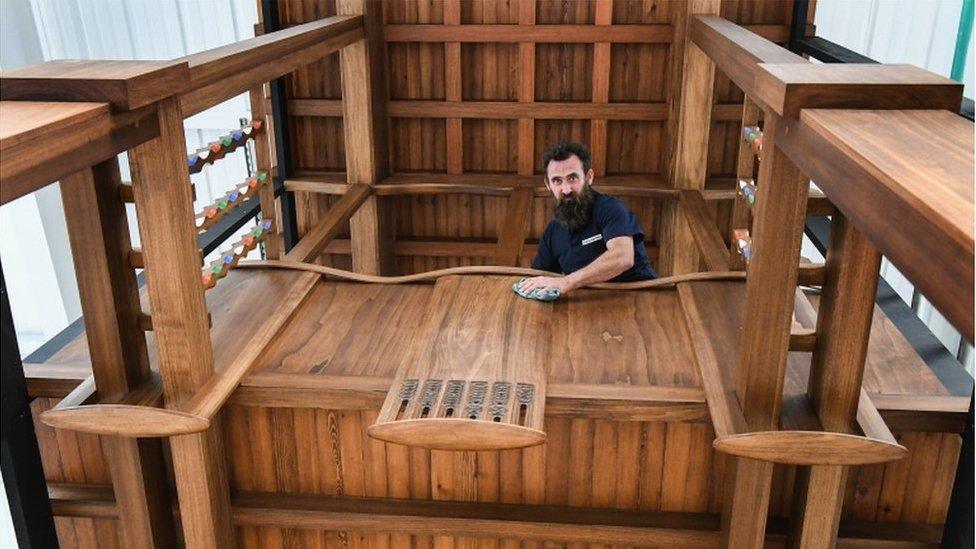
- Published3 February 2017
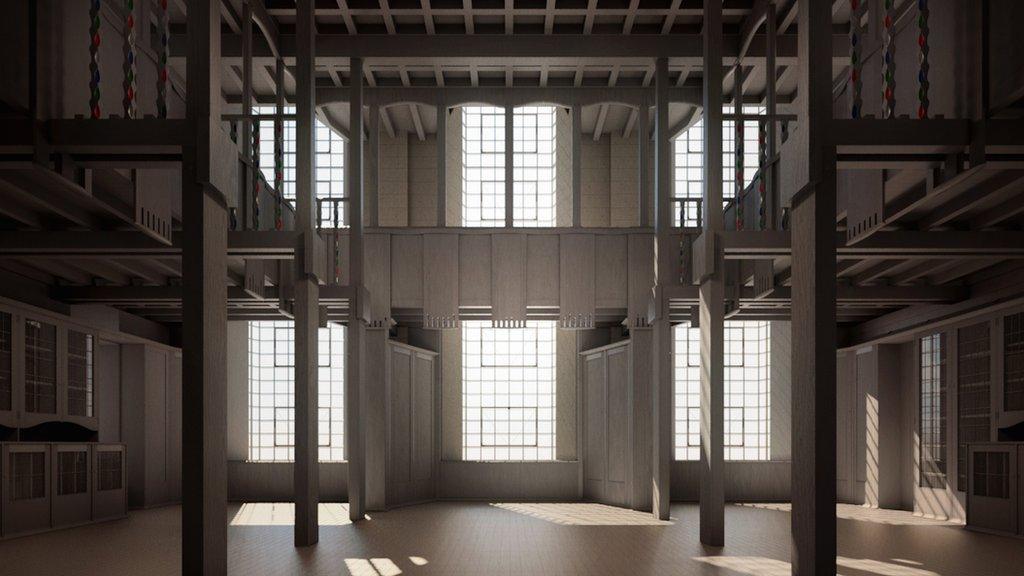
- Published26 November 2014
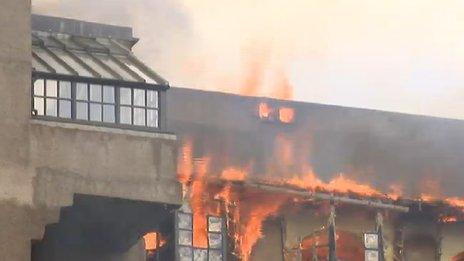
- Published25 May 2014
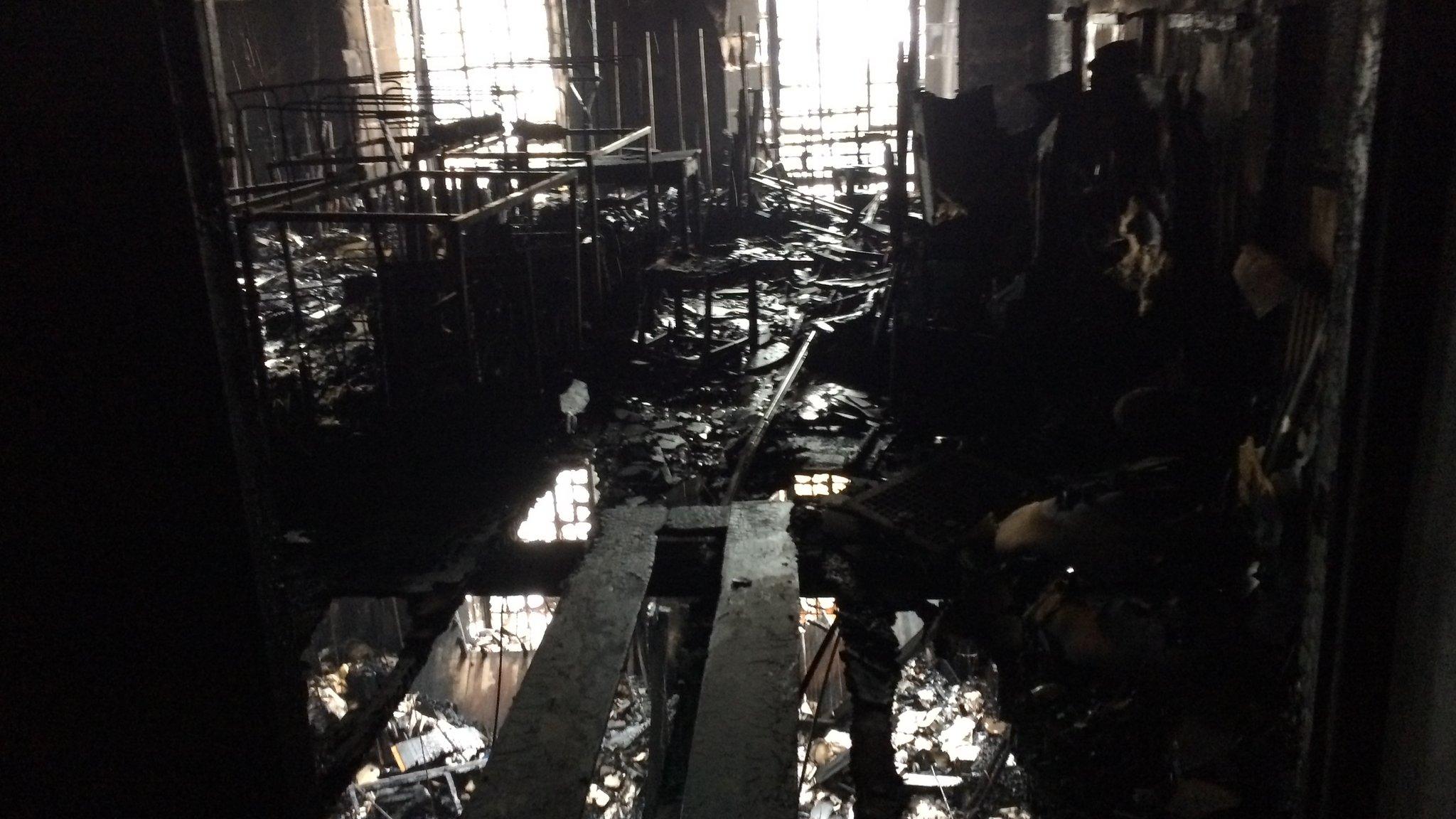
- Published24 May 2014
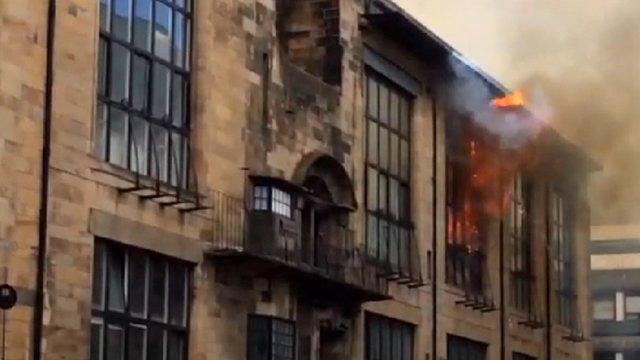
- Published28 March 2014
